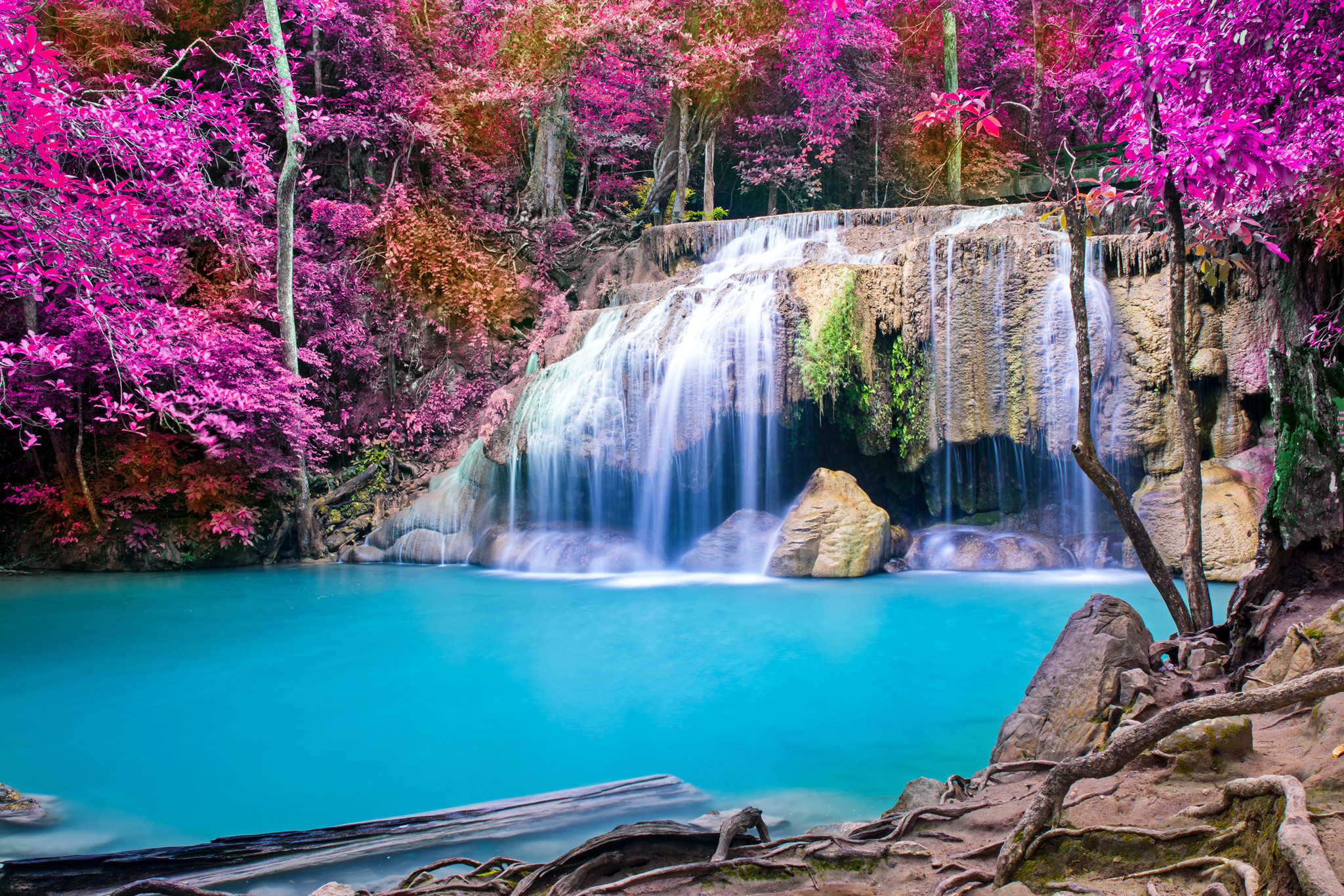
That’s okay because you’ll be using the water from your darker, faster exposures when you blend these images together.Īll we care about with this shot is capturing an image that clearly shows the surrounding area. When you try this you may find that the water is a completely blown out mass of pure white. For this to work, I must have Exposure Simulation enabled on my camera (check the settings for yours). I usually stop down my aperture to around f/11 (I used f/8 because my lens performs well at that aperture.) Then I watch my Live View display while increasing the shutter speed and overexposing the image until I can clearly see all of the shadow detail on my display. This gives me great image quality for everything in the frame that doesn’t include white water.
#WATERFALL PICTURES ISO#
But I’ll also capture a super bright image with maximum depth of field at low ISO which I can use for the rest of the scene. My first three steps explain how I capture all of that lovely motion and detail by using faster shutter speeds. I’ll be erasing that later in processing. I don’t care about the blown out white water.

This overexposed shot captures bright shadow detail in the mossy rocks. This often gets me closer to the 1/6″ shutter speed while capturing an image that is still bright enough, even in low light conditions. For the above images, I was shooting with the Zeiss Batis 18mm and was able to open up to f/2.8. Firstly, I’ll open up the aperture to let more light into the camera. There are two things you can do to deal with this problem. This is the ideal scenario if you’ve got enough light to work with, but what if there isn’t much available light and using faster shutter speeds just ends up giving you an image that’s way too dark? Tip 2 – Use a wider (faster) aperture if requiredĪs a landscape photographer, I usually prefer to stop down to apertures like f/11 or even f/16 so that I can capture the maximum depth of field and sharpness. I feel that these faster shutter speeds tell the story much better than a totally silky smooth white out because the added detail shows the true power of water as it carves through the landscape. It’s still long enough to create motion blur but fast enough to capture the motion of individual water droplets as they blast through your scene.

Shooting waterfalls using a 1/6″ to 1/3″ shutter speed captures far more detail and texture in the moving water. I’ll sometimes even use 1/6″ (like in the left image above) depending on the volume of water in my composition. While many photographers would consider 1/3″ (one-third of a second) a slow shutter speed, it’s typically a lot faster than many would use for shooting waterfalls. If you prefer, you can watch the whole thing on video, see below, then read on for the written version. Water is the most powerful force of nature on our planet and there’s a simple technique you can use when photographing waterfalls that more effectively harnesses the fury and chaos of mother nature.
#WATERFALL PICTURES HOW TO#
Everybody loves a good waterfall image with a long exposure, but in this article, I’ll show you how to capture more detail and motion in that fascinating tumble of whitewater.


 0 kommentar(er)
0 kommentar(er)
